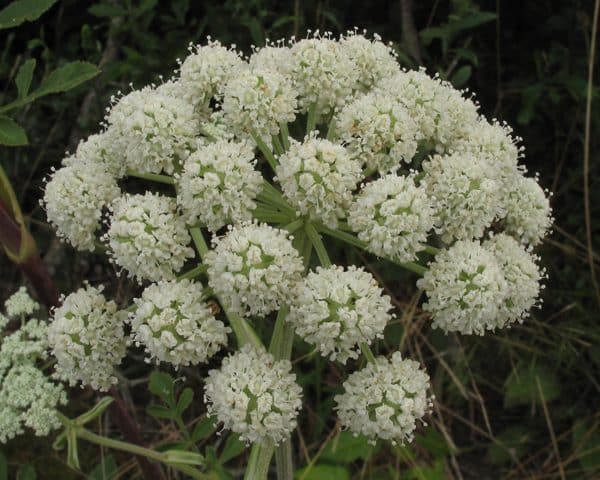With its white, lacy blooms and name, angelica conjures up the ethereal. But did you also know that this summer bloomer is responsible for martinis? A European herb that blooms profusely at this time of year, angelica is used in a variety of liquors, including gin and vermouth. Throughout history, its foliage has also been used to make herbal teas for medicinal purposes.
In the same family as carrots and parsley, Angelica features showy, umbrella-like flowers that make great landing pads for butterflies and bees. The leaves have a musky scent and sweet flavor. The giant roots that resemble large, pale carrots and the plant’s seeds are also edible. Foliage, roots and seeds of angelica can be used to make tea and as seasoning. To have luck growing angelica in your summer garden, keep the following growing tips in mind. Ensure adequate drainage. Angelica requires rich, fertile soil with good drainage to do well. Dig a 6- to 8-inch hole in the garden where you wish to plant angelica and fill with water. The water should drain within an hour. If it doesn’t drain, dig compost and pumice into the planting hole and re-test by filling with water again. Even if you do have good drainage, mix compost into the planting hole prior to planting to enrich the soil. Provide sufficient growing space. Angelica grows 1 to 6 feet tall and will spread 2 to 4 feet wide, if given enough growing space. Plant in part-shade. Place angelica in a part of the garden that receives some shade in the summer months. Good locations are those that get morning sun and afternoon shade. The plant can also thrive in an area with dappled sunlight throughout the day. The latter is a particularly good location for parts of the country that experience especially hot summers.

